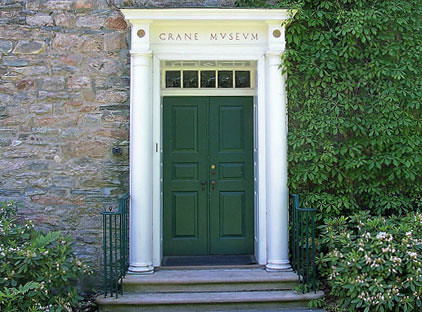
PREV ARTICLE
NEXT ARTICLE
FULL ISSUE
PREV FULL ISSUE
ARTICLE PROFILES CRANE PAPER COMPANY
The Boston Globe published an article this week on the Massachusetts firm that has the exclusive contract to make paper for U.S. currency. Here are some excerpts.
-Editor
Crane & Co., known better for its pricey stationery, runs the plant in a secluded swatch of the Berkshires. It is the only spot in the United States where the paper that winds up in wallets, purses, and cash registers is made, and Crane has been the sole maker of US currency paper — everything from $1 to $100 notes — for more than 130 years. Counterfeiting has been a problem even longer, cropping up soon after the United States started printing its national currency. Today, the challenge has grown as cheap copiers and scanners make it easier to start small-scale counterfeit operations anywhere in the world, said Max Milien, a spokesman for the Secret Service. “Economic times are hard, unfortunately,'' he said. “People are willing to try anything.'' The most advanced and costly technology in the new $100 bill is a three-dimensional security ribbon — manufactured by Crane in an undisclosed location outside Massachusetts — which is woven into the paper next to Benjamin Franklin's portrait. The blue strip, less than half an inch wide, contains more than a million, microscopic lenses on the surface. Each lens acts like a tiny projector, magnifying the ink images printed underneath. Together, the lenses produce two sets of images — bells and the number 100 — that move around and morph into one another as the paper is tilted. Shifting images make it harder for counterfeiters to create forgeries, and the moving bells and 100s are easy-to-spot, easy-to-explain features anyone can check just by bending the bill back and forth. The other new security measure is an image of a bell inside a copper inkwell, also on the front of the note. As the bill is moved, the bell changes color, blending in with the inkwell when it turns copper and reappearing when it turns green. By September, Crane must produce enough paper for 2.4 billion revamped $100 notes. (At any given moment, 6.5 billion of the bills are circulating, most of them abroad.)
To read the complete article, see:
Mass. firm adds razzle-dazzle to cash
(www.boston.com/business/technology/articles/2010/06/28/
While visiting the company's web site I learned that it operates a museum of paper-making technology. Has anyone ever been there?
-Editor
We invite you to visit The Crane Museum of Papermaking, housed in Crane's 1844 Old Stone Mill. The museum, first opened in the autumn of 1930, is on the National Register of Historic Places. The one-story building is pleasantly situated on the banks of the Housatonic River, which supplied the water to wash the rags and drive the machinery of the early Crane mills. With its rough-hewn oak beams, colonial chandeliers, many-paned windows and wide oak floorboards, the interior resembles the Old Ship Church in Hingham, Mass. In this appropriate setting, you will find a scale model (made by Dard Hunter) of the vat house of the first Crane mill, as well as some of the hand molds that Zenas Crane used from 1801 to 1831. In wall and floor cases, exhibits trace the history of American papermaking from Revolutionary times, with special emphasis on the durable, distinctive Crane papers made for currency, bonds, stock certificates and elegant stationery. The museum is open Monday through Friday from 1 to 5 p.m., free of charge, from early June through mid-October.

Wayne Homren, Editor The Numismatic Bibliomania Society is a non-profit organization promoting numismatic literature. See our web site at coinbooks.org. To submit items for publication in The E-Sylum, write to the Editor at this address: whomren@gmail.com To subscribe go to: https://my.binhost.com/lists/listinfo/esylum All Rights Reserved. NBS Home Page Contact the NBS webmaster 
|